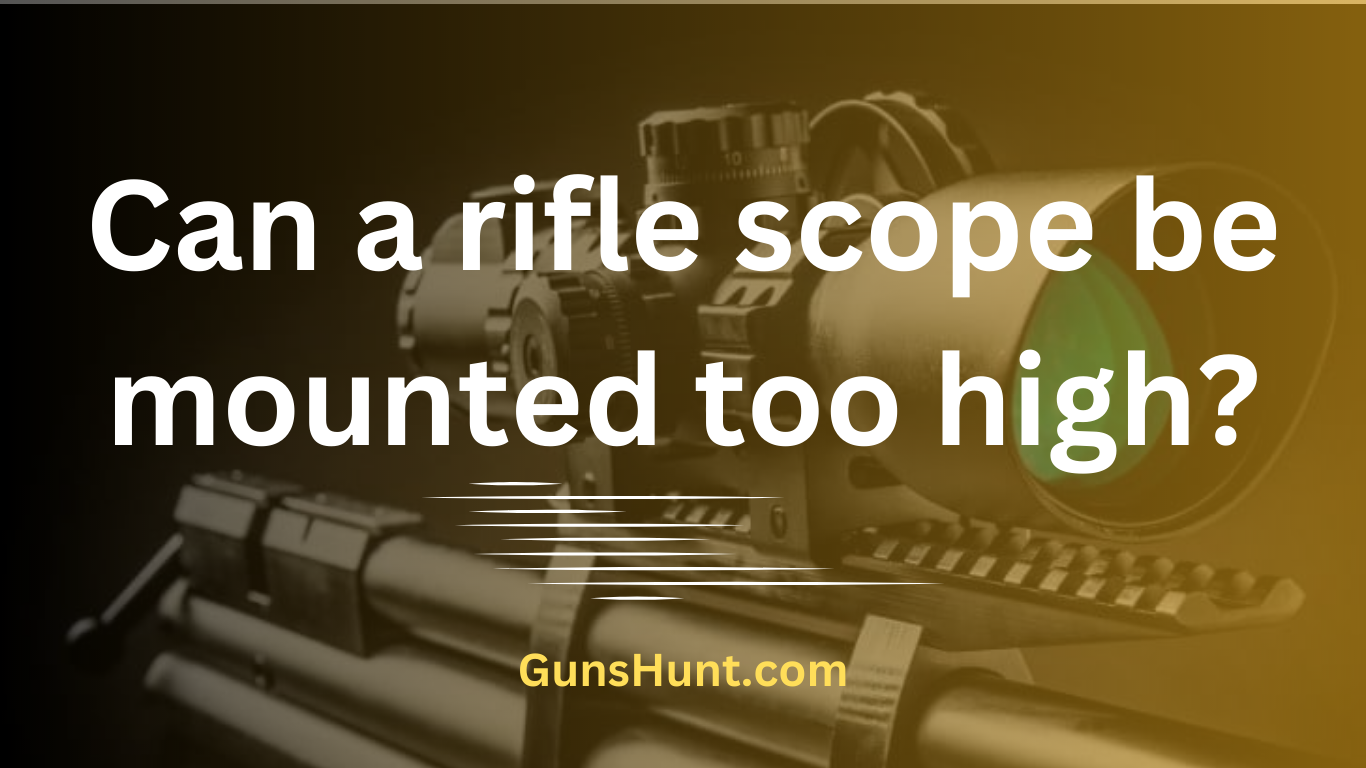When it comes to mounting a rifle scope, one might wonder if there is such a thing as placing it too high. After all, the elevation of a scope can affect your aim, field of view, and overall shooting experience.
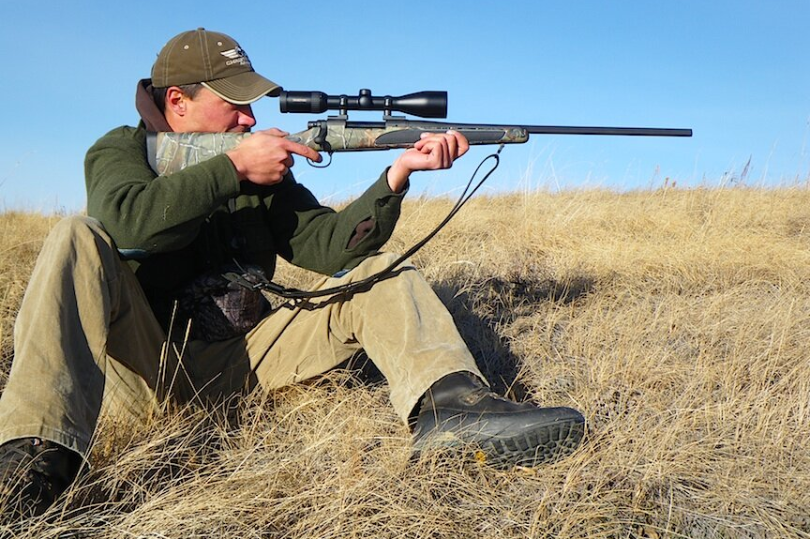
While it may seem like a minor detail, the height at which you mount your scope can have a lasting impact on your marksmanship.
In this article, we will explore the implications of mounting a rifle scope at varying heights, addressing concerns about comfort, accuracy, and safety.
Whether you’re a seasoned shooter or a novice gun owner, this guide aims to answer your questions about proper scope placement.
Can a rifle scope be mounted too high?
A rifle scope that is mounted too high can create several challenges for the shooter. One of the most immediate issues is the alignment between the eye and the scope, commonly known as cheek weld.
A proper cheek weld is crucial for accurate shooting. When the scope is too high, maintaining this alignment becomes difficult, thereby affecting your accuracy and the consistency of your shots.
Optical concerns are another factor to consider. Rifle scopes are designed to offer an optimal field of view at a specific height above the bore.
Mounting a scope too high could narrow this field of view, making it harder to track targets or observe your surroundings effectively. In some cases, it could also distort the image, complicating the shooting process even more.

Accuracy can also be compromised in another way. The higher the scope is mounted, the greater the distance between the axis of the bore and the optical axis of the scope.
This vertical separation requires the shooter to make more extensive adjustments for different shooting distances, which can be a cumbersome and error-prone process.
Simply put, the greater the distance between the bore and the scope, the harder it becomes to shoot accurately at varying distances without compensating for that height difference.
Comfort and safety are further considerations. A scope mounted too high can result in awkward shooting positions, which not only diminish comfort but can also make it more challenging to hold the rifle steady for extended periods.
In extreme cases, incorrect mounting height could even result in the scope coming into contact with the barrel, posing a potential safety risk.
What is the sight height on scope?
Sight height, sometimes called scope height, refers to the vertical distance between the centerline of the scope’s objective lens and the centerline of the bore of the rifle. In simpler terms, it’s the gap between the scope and the barrel.
This measurement is crucial because it directly affects the ballistics calculations needed for precise long-range shooting. When you adjust for factors like bullet drop over distances, understanding your sight height becomes essential for accuracy.
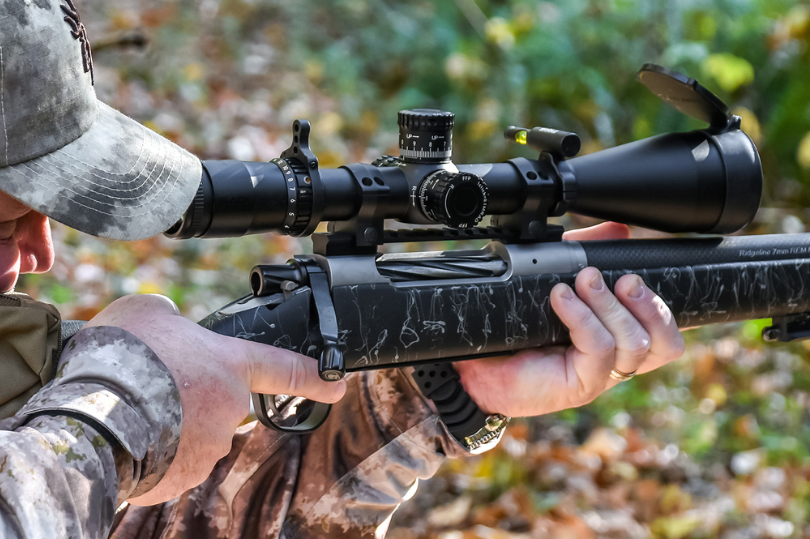
In most cases, sight height is measured in inches or millimeters and can vary based on the specific make and model of both the rifle and the scope. Additionally, the type of rings or mounts you use will also influence the sight height.
For instance, low-profile mounts will offer a shorter sight height, keeping the scope closer to the barrel, while high-profile mounts will increase the sight height, elevating the scope further from the barrel.
Knowing the sight height is important for more than just long-range ballistics calculations. It also has implications for the shooter’s comfort and the ease with which they can maintain a proper cheek weld.
As mentioned earlier, a scope that’s mounted too high or too low can interfere with your shooting position, making it uncomfortable to hold the rifle and aim accurately over extended periods.
The Importance of Proper Scope Height
When we discuss rifle scopes, the focus is often on magnification, lens quality, and reticle type. However, one crucial but often overlooked factor is the height at which the scope is mounted.
The correct scope height influences various aspects of shooting, including accuracy, comfort, and ease of use.
Having the scope at an improper height could lead to misalignment with the rifle’s bore axis. This affects your field of view, and the misalignment could make long-distance shooting incredibly challenging. It also becomes a hassle to adjust for windage and elevation when you’re dealing with an improperly mounted scope.
In terms of comfort, the height of the scope will determine your shooting position. If the scope is too high, it becomes uncomfortable to hold your rifle correctly, which will inevitably affect your accuracy and could lead to muscle strain over time.
Safety should never be overlooked, and an incorrectly mounted scope could lead to unsafe conditions. The scope could potentially come into contact with the barrel, creating both an accuracy concern and a safety risk.
It’s not just about how the rifle feels in your hands; it’s also about how well you can align your eye with the scope. If the scope is too high, you might find it difficult to maintain a proper cheek weld, making your shots less consistent and reliable.
Optical Issues with High Scope Mounts
Another key concern with high scope mounts is the optical complications that arise. Scopes are engineered to provide an optimal field of view at a specific height.
When the scope is mounted too high, your field of view could be reduced, affecting your ability to track targets effectively.
Besides the narrowed field of view, you might also encounter issues like optical distortion. This is because scopes are designed for an optimal optical axis.
Deviating from this axis by mounting the scope too high can cause problems with how light travels through the lens system.
Even the quality of the image can be compromised. High scope mounts can result in less light reaching the scope’s lens, leading to a darker image that can make it challenging to identify targets in low-light conditions.
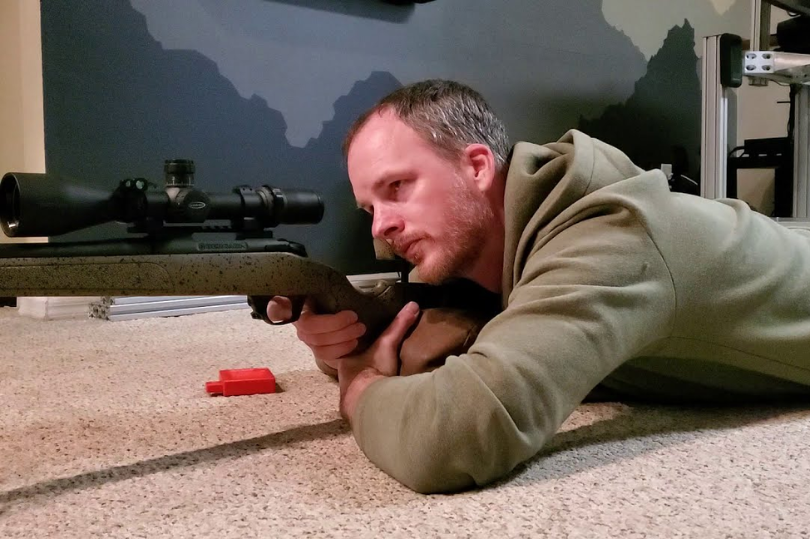
The focus may also be affected. With a higher mount, you may find it difficult to quickly focus on your target, requiring you to fiddle with the scope’s settings and wasting precious seconds that you might not have in a hunting or tactical scenario.
Lastly, parallax errors can become more pronounced with high scope mounts. Parallax is the apparent movement of the reticle in relation to the target when you move your head.
A high-mounted scope may amplify this issue, making it even more critical to position your head precisely while aiming.
Accuracy Implications
When a scope is mounted too high, the vertical distance between the scope’s optical axis and the rifle’s bore axis is increased. This separation has a direct impact on shooting accuracy, particularly at varying distances.
When you shoot at targets at different distances, you need to adjust your aim to compensate for bullet drop. With a high scope mount, the bullet drop calculations become more complex because the bullet’s trajectory and the line of sight diverge more significantly.
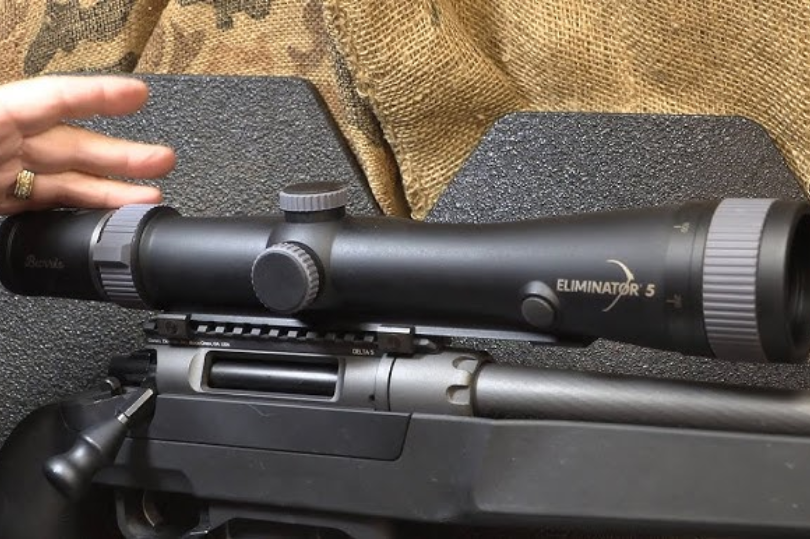
Even if you are a seasoned shooter familiar with making these adjustments, the added complexity will make it easier to make an error. This can result in missed shots or, worse, hitting something you didn’t intend to.
Furthermore, a high-mounted scope can make it more challenging to shoot accurately in windy conditions. Since the scope sits higher above the bore, wind can have a more pronounced effect on the bullet’s trajectory, requiring additional windage adjustments that can be hard to get just right.
Beyond these accuracy concerns, the increased height will also affect the rifle’s balance. A top-heavy rifle is harder to control, making it difficult to maintain a steady aim.
This becomes even more of an issue when you’re shooting off-hand or from an unstable position.
Comfort and Safety Concerns
As touched upon earlier, mounting a scope too high can lead to uncomfortable shooting positions. When your scope is too high, it becomes challenging to maintain a stable and comfortable cheek weld against the rifle stock. This not only affects your aim but also your overall shooting experience.
Another discomfort issue arises from the awkward angles you’ll have to hold your head and neck to align your eye with the scope.
This can lead to strain and fatigue, which is not only uncomfortable but also reduces your ability to maintain focus and aim over extended periods.
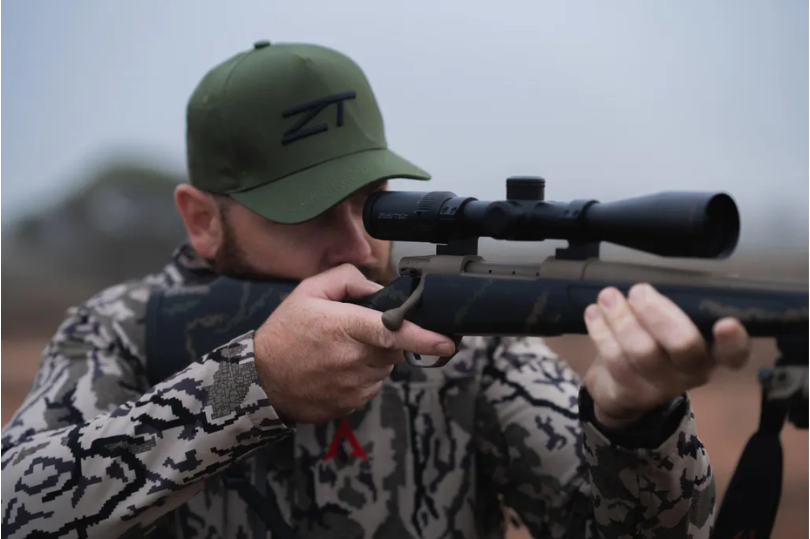
The issue of scope height extends beyond just comfort; it also has implications for safety. An improperly mounted scope might even touch the barrel.
This is more than just an accuracy problem; it can become a significant safety hazard. The scope can become damaged, and its structural integrity compromised, leading to potentially dangerous situations.
The safety concern also extends to others around you. An uncomfortable and improperly mounted scope increases the chances of unintentional movements or slips that could lead to accidental discharges or misfires.
It’s not just the shooter who needs to be concerned about safety; bystanders and even the target (in the case of hunting game) also stand at risk if the rifle is not set up correctly.
Therefore, correct scope height is as much a matter of public safety as it is about personal comfort and shooting accuracy.
Conclusion
While it may not be the first thing you think of when setting up your rifle, the height at which you mount your scope is a fundamental aspect of shooting that should never be overlooked.
Whether you’re a beginner or an experienced marksman, understanding the implications of scope height on accuracy, comfort, and safety is essential for a fulfilling and responsible shooting experience.

